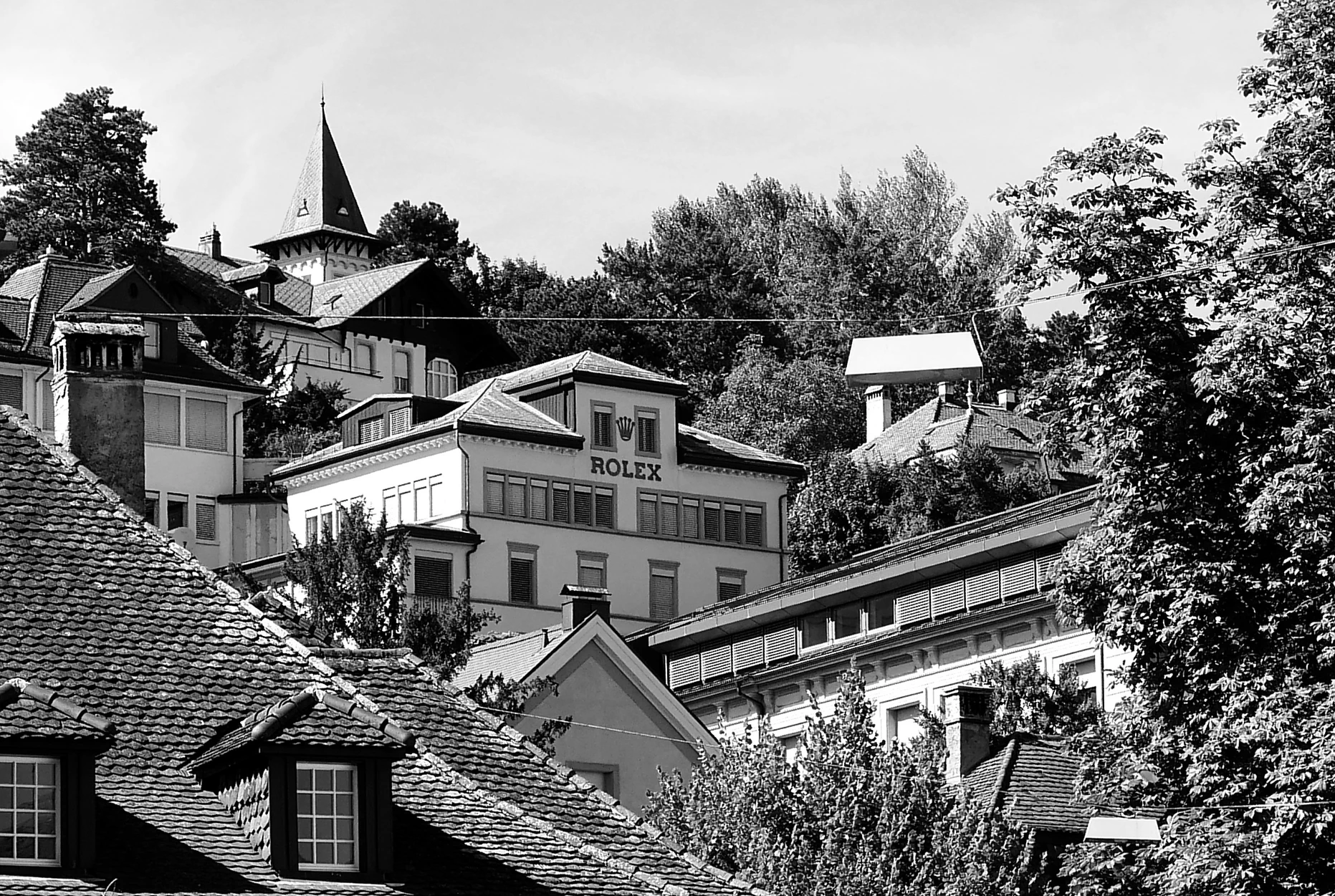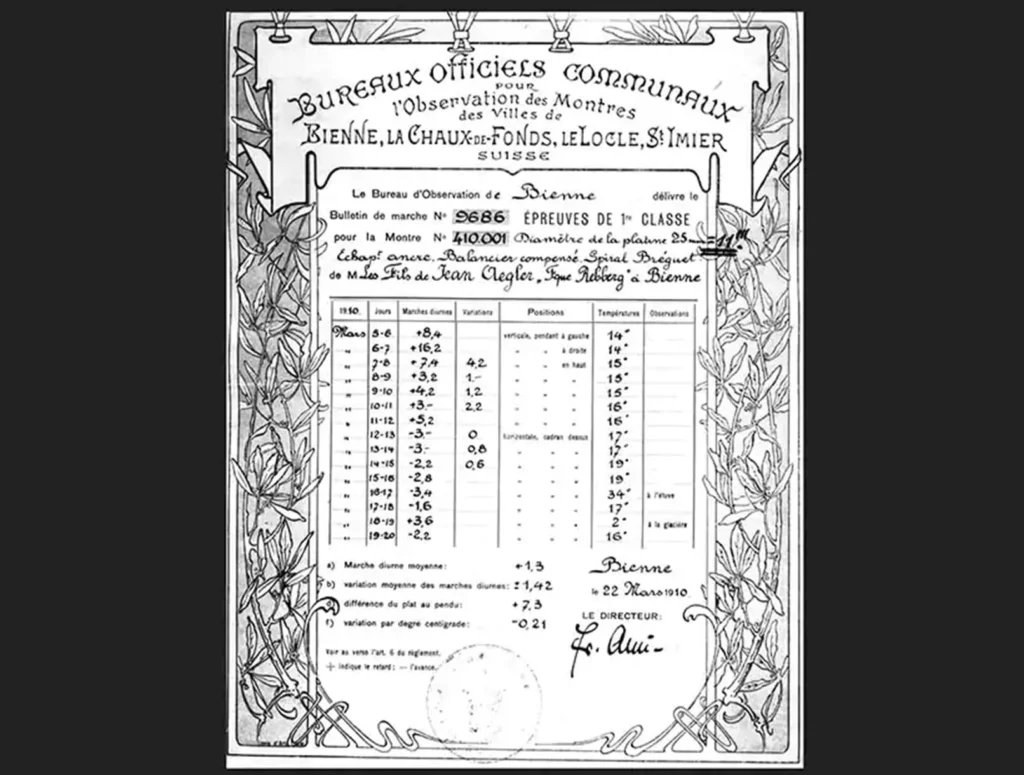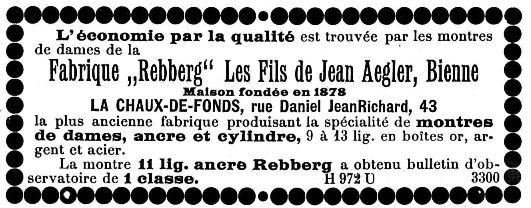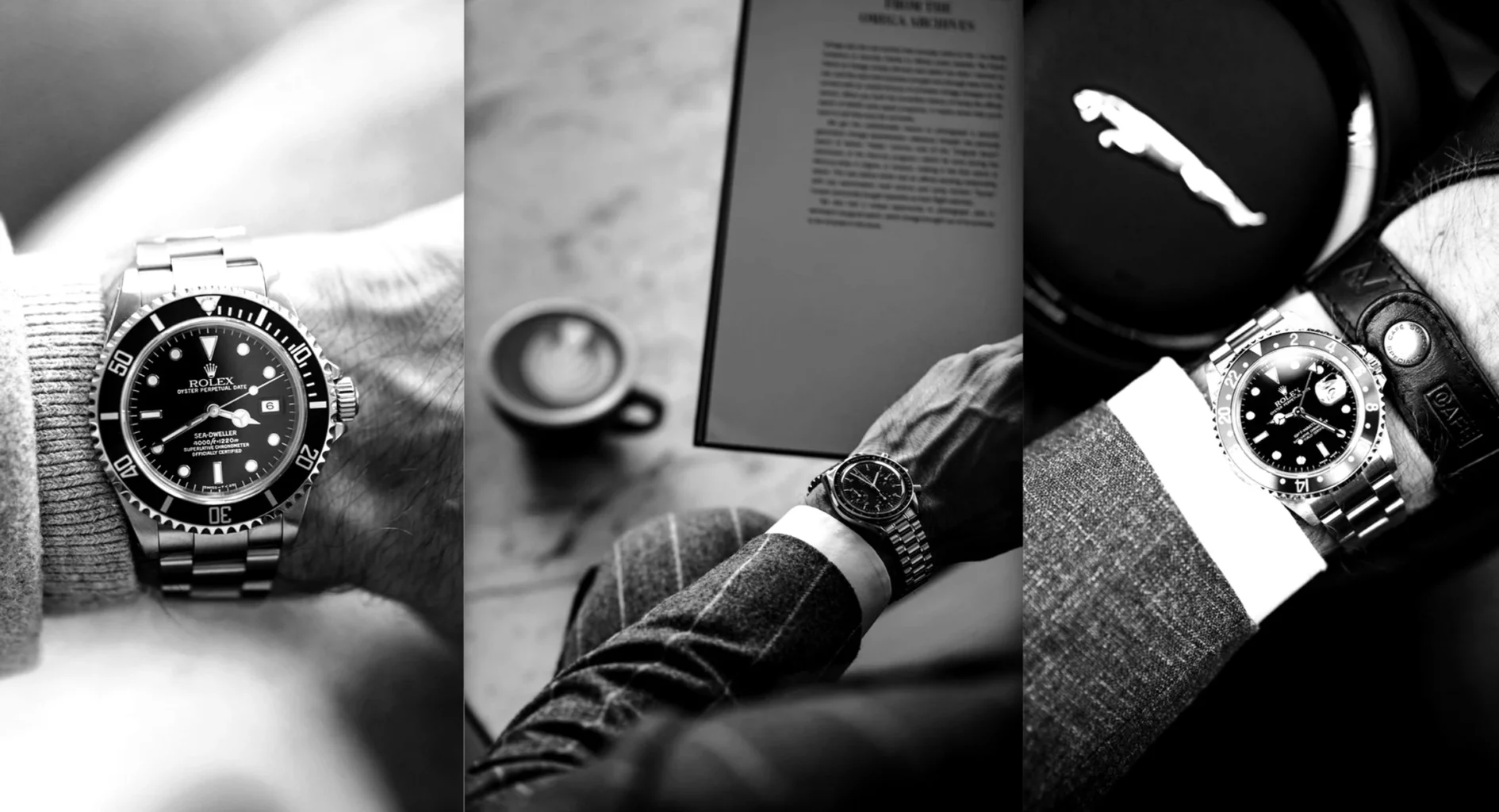
One thing Rolex is famous for, and rightly so, is the precision of its watches. Anyone who has owned a contemporary (and in many cases also a vintage) one can attest to how reliable the timekeeping is. Relentless focus on quality of the movement was at the heart of Hans Wilsdorf’s vision, and what drove him to Bienne in the first place.
As you can read about in much more detail in this earlier post on the origins of Rolex in Bienne, there were two main reasons why Wilsdorf chose Jean Aegler as his exclusive movement supplier. The first was their remarkably small size: wristwatches, especially for men, were not a thing back then, and Wilsdorf was among the visionary pioneers who wanted to change that. The other reason was about the mechanics, based on lever escapements, a more robust and precise technology than the more common cylinder escapements found in less expensive watches.
The first major milestone in Rolex’s history of achieving officially recognized chronometric precision took place in 1910, in Bienne. As stated on the brand’s website, that year, “a Rolex watch was the first wristwatch in the world to receive the Swiss Certificate of Chronometric Precision, granted by the Official Watch Rating Centre in Bienne.”

While this may very well be entirely true, it must be said that, from a historical analysis perspective, some unclarity remains. In both the certificate shown on the Rolex website (above) and an Aegler advertisement celebrating the accomplishment (below), there is no mention of Rolex or Wisldorf. And back then, Aegler still had other customers. Also, while clearly the movement is very small (11 lines i.e. about 24.8 mm), the documents do not specify that the watch in question is a wristwatch.

We all know that there is a lot of storytelling in watch marketing, and sometimes, the spin is borderline to put it nicely. In this particular case, given that the Rolex brand had been registered 2 years before, and that Aegler eventually worked exclusively for Rolex (and, in 1919, incorporated the word “Rolex” in its company’s name: Manufacture des Montres Rolex, Aegler S.A.), it is very plausible that the watch certified in 1910 was indeed a Rolex wristwatch. But, until proof is given, I suggest treating the information with a friendly dose of scrutiny.
For those interested in going deeper, and also to acknowledge what has been a fantastic resource for me on the topic, I highly recommend the section on Aegler on the Vintage Watch Straps site by David Boettcher.




Interesting… Now I’m really curious, would love to know what happened exactly back then.